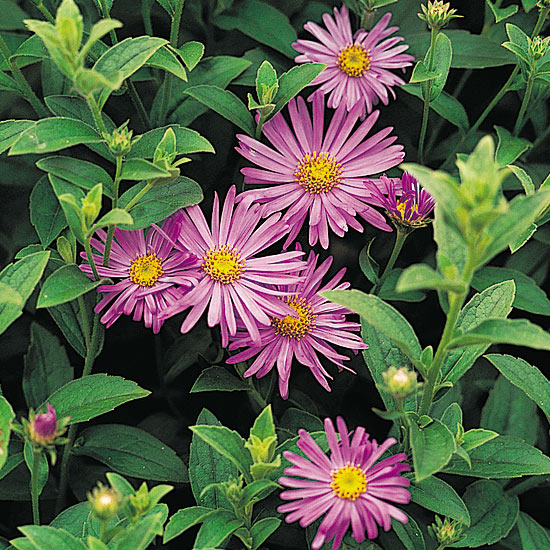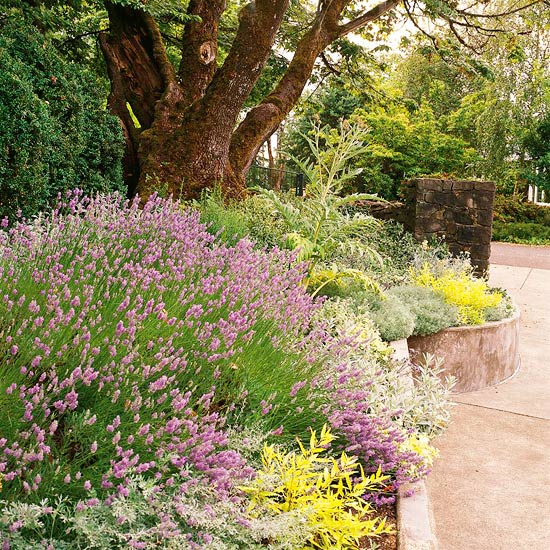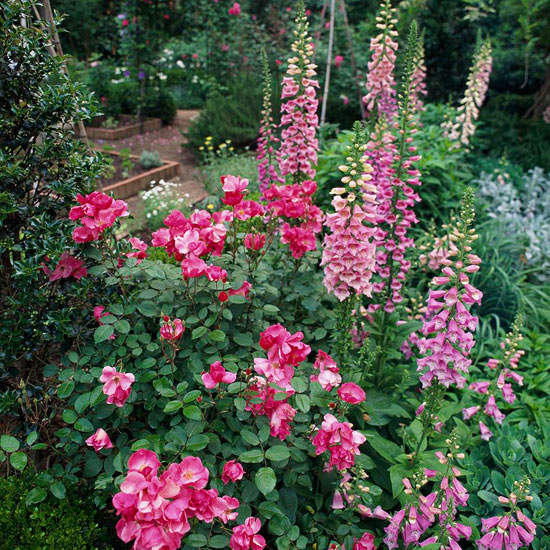





 Aster x frikartii
Aster x frikartii
As the most common flower color, lavender has many faces. It cools to a periwinkle blue in the flowers of Vinca minor and warms to a reddish mauve in clematis or pansy blossoms. Lavender abounds among the blossoms of herbs, from chives and hyssop to thyme, catmint, and sage.
Lavender forms harmonies with its cousins in the color spectrum: deep violet and magenta. Pale lavender creates soothing pastel scenarios when paired with white, pink, or pale yellow. Bluer shades of lavender shine when warmed by the company of complementary yellow-orange or peach. Planted near silver foliage, lavender looks luminous.
Discover the best lavender flowers for your garden.
continue reading below Lavender (the plant, not the color)is a Mediterranean native thatdoes well in sun, heat, and poor soil.
Lavender (the plant, not the color)is a Mediterranean native thatdoes well in sun, heat, and poor soil.
One weakness of lavender: It tends to fade into a dull haze en masse. Prevent this occurrence by interplanting it with bolder colors such as crimson or gold. Yellow makes a perfect partner. (Picture lavender and pale yellow violas that sport both colors in their spring blooms.) Chocolate brown foliage mixed with lavender flowers results in a spectacular marriage. At first blush, pink and lavender might seem too rosy a garden color scheme, but it's a combination that works. Lavender larkspur glows next to pink coneflower. Add white or sky blue to balance the pink tones. Mauve also goes well with cream, buff, gray, and pink.
Lavender enhances the fall garden's earth tones of bronze, orange, and gold with a touch of the ethereal, represented by perennial asters, fall crocuses, and aconites.
Related Feature: Purple Passion Container Garden Design

Copyright © www.100flowers.win Botanic Garden All Rights Reserved